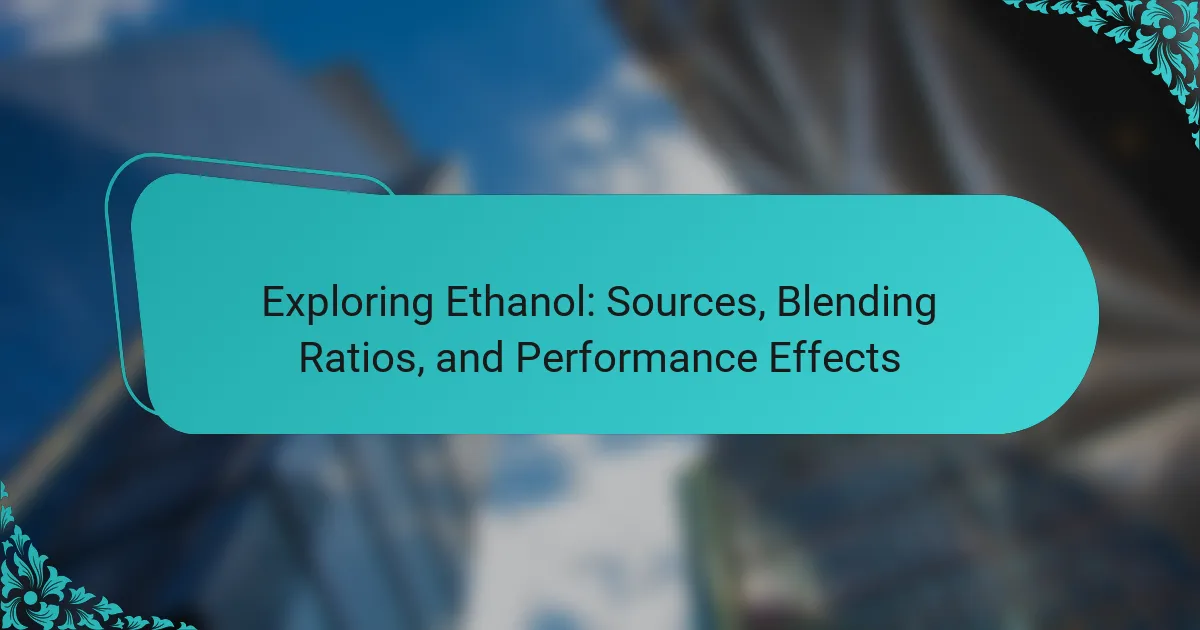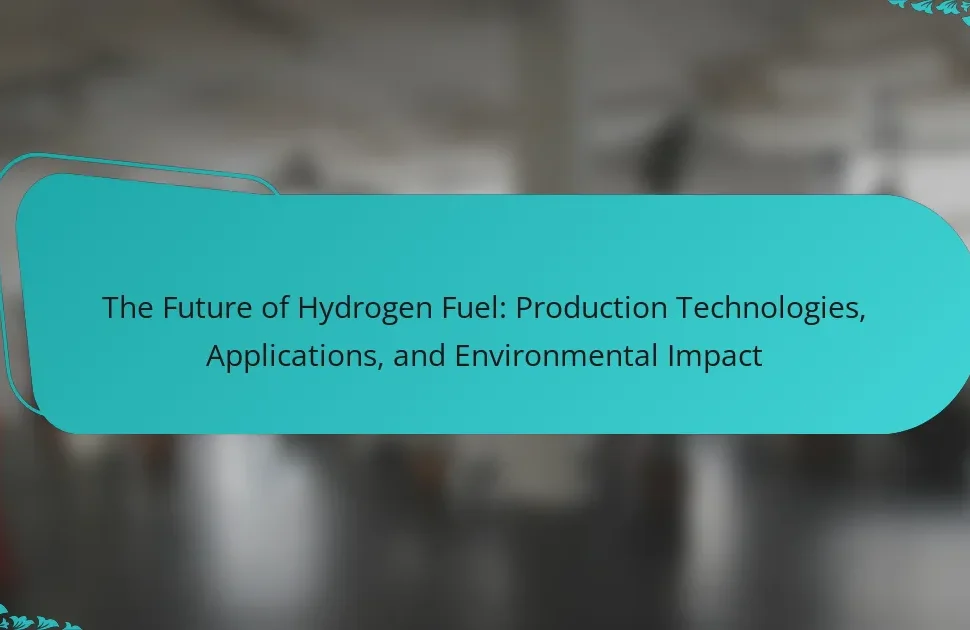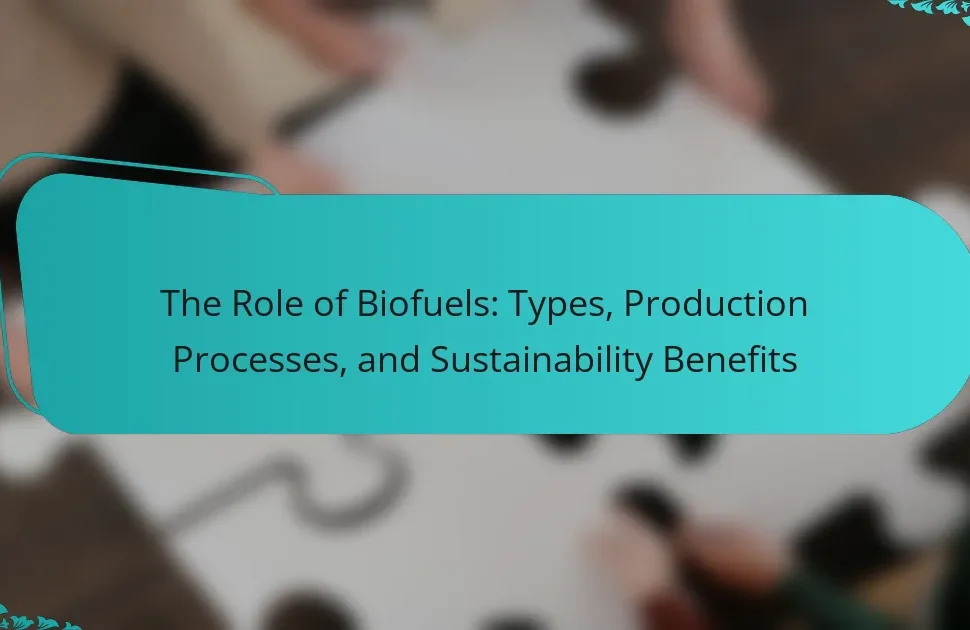
What is Ethanol and Why is it Important?
Ethanol is a colorless, flammable alcohol used as a fuel and solvent. It is produced through the fermentation of sugars and starches from plants. Ethanol is important because it serves as a renewable energy source. It helps reduce greenhouse gas emissions when blended with gasoline. In the United States, ethanol is commonly derived from corn. The Renewable Fuel Standard mandates the blending of ethanol into transportation fuels. This blending supports energy independence and promotes agricultural economies. Ethanol can also improve engine performance and reduce harmful emissions.
How is Ethanol Produced?
Ethanol is produced primarily through fermentation and distillation processes. The fermentation process involves converting sugars into ethanol using yeast. Common sources of sugars include corn, sugarcane, and other biomass. Yeast consumes the sugars and releases ethanol and carbon dioxide as byproducts. After fermentation, the mixture undergoes distillation to separate ethanol from water and other components. The distillation process utilizes heat to vaporize ethanol, which is then condensed back into liquid form. This method can yield ethanol concentrations of up to 95%. Ethanol production is significant in biofuel applications, contributing to renewable energy sources.
What are the primary sources of Ethanol?
The primary sources of ethanol are biomass, sugarcane, corn, and other agricultural products. Biomass includes organic materials such as wood, agricultural residues, and dedicated energy crops. Sugarcane is a significant source, especially in countries like Brazil, where it is fermented to produce ethanol. Corn is the leading source in the United States, where it is processed through fermentation. Other sources include wheat and barley, which can also be converted into ethanol. The fermentation process involves converting sugars into alcohol, making these sources viable for ethanol production.
What processes are involved in Ethanol production?
Ethanol production involves several key processes. The primary processes are fermentation, distillation, and dehydration.
Fermentation converts sugars into ethanol using yeast. This process typically occurs in large fermentation tanks. The sugars can come from various sources, such as corn or sugarcane.
After fermentation, the mixture contains ethanol and water along with other byproducts. Distillation then separates ethanol from this mixture. Distillation uses heat to vaporize the ethanol, which is then condensed back into liquid form.
Finally, dehydration removes any remaining water from the ethanol. This is often done using molecular sieves or other drying agents.
These processes collectively yield an ethanol product suitable for use as fuel or in beverages.
What are the Different Uses of Ethanol?
Ethanol has various uses across multiple industries. It serves as a fuel additive to enhance octane levels in gasoline. Ethanol is also used in the production of alcoholic beverages. Additionally, it functions as a solvent in pharmaceuticals and cosmetics. Ethanol is employed in the manufacturing of personal care products. It acts as a disinfectant in hand sanitizers and antiseptics. Furthermore, ethanol is utilized in the food industry as a preservative. Its versatility makes it a valuable compound in numerous applications.
How does Ethanol function as a fuel?
Ethanol functions as a fuel primarily through combustion. When burned, ethanol releases energy that powers engines. It is often blended with gasoline to enhance performance. Ethanol has a high octane rating, which improves engine efficiency. Additionally, it reduces harmful emissions compared to pure gasoline. Ethanol can be produced from renewable resources, such as corn and sugarcane. This makes it a sustainable alternative to fossil fuels. Studies show that using ethanol can reduce greenhouse gas emissions by up to 30%. Thus, ethanol serves as an effective and environmentally friendly fuel option.
What role does Ethanol play in the beverage industry?
Ethanol serves as a primary alcohol in the beverage industry. It is the main ingredient in alcoholic drinks like beer, wine, and spirits. Ethanol is produced through fermentation of sugars by yeast. This process generates ethanol as a byproduct, contributing to the beverage’s alcohol content. The concentration of ethanol affects the flavor, aroma, and overall experience of the drink. In many beverages, ethanol levels typically range from 3% to 40% by volume. Additionally, ethanol acts as a solvent for flavor compounds, enhancing the beverage’s taste profile. Its role is crucial in the production, formulation, and enjoyment of alcoholic beverages.

What are the Blending Ratios for Ethanol?
Ethanol blending ratios typically range from 10% to 85%. The most common blend is E10, which contains 10% ethanol and 90% gasoline. E15 contains 15% ethanol, while E85 consists of 51% to 83% ethanol. These ratios are used to improve fuel performance and reduce emissions. The U.S. Environmental Protection Agency has approved E10 and E15 for use in most vehicles. Higher blends like E85 are primarily used in flex-fuel vehicles. Ethanol blending ratios can vary by region and regulatory standards.
How are Blending Ratios Determined?
Blending ratios are determined based on the desired properties of the final fuel mixture. Key factors include fuel performance, emissions standards, and cost considerations. Testing various ethanol and gasoline combinations helps identify optimal ratios. Laboratory analyses assess the impact on engine performance and emissions. Regulatory guidelines also influence the acceptable blending limits. Historical data on fuel performance informs current blending practices. Industry standards provide benchmarks for consistency and quality. Ultimately, blending ratios aim to balance efficiency, environmental impact, and economic viability.
What factors influence the ideal blending ratio of Ethanol?
The ideal blending ratio of ethanol is influenced by several key factors. These factors include engine compatibility, fuel performance requirements, and regulatory standards. Engine compatibility determines how well ethanol blends operate in various types of engines. Different engines may require specific ethanol ratios for optimal performance. Fuel performance requirements relate to the desired octane rating and energy content of the fuel. Higher ethanol content can enhance octane but may reduce energy density. Regulatory standards set limits on ethanol content for emissions control and environmental impact. These standards can vary by region and affect blending ratios. Additionally, market conditions and feedstock availability can influence the economics of ethanol production and blending.
How do regulatory standards affect Ethanol blending ratios?
Regulatory standards significantly influence ethanol blending ratios in fuels. These standards dictate the maximum and minimum percentages of ethanol that can be blended with gasoline. For instance, the Renewable Fuel Standard (RFS) in the United States mandates specific volumes of renewable fuels, including ethanol, to be blended into transportation fuels.
Compliance with these regulations is crucial for fuel producers. They must adjust blending ratios to meet the required volumes set by regulatory bodies. Additionally, state-level regulations may impose stricter blending requirements, further affecting the ratios used.
Data from the U.S. Environmental Protection Agency indicates that these standards aim to reduce greenhouse gas emissions and promote energy independence. As a result, producers often blend higher ethanol ratios to align with these environmental goals.
Overall, regulatory standards play a pivotal role in shaping the ethanol blending landscape, ensuring that producers meet both environmental objectives and market demands.
What are Common Blending Ratios in Fuels?
Common blending ratios in fuels vary depending on the type of fuel and its intended use. For gasoline, ethanol is commonly blended at ratios of 10% (E10), 15% (E15), and 85% (E85). E10 is widely used in the United States and is compatible with most vehicles. E15 is available at select stations and may improve fuel economy. E85 is primarily used in flex-fuel vehicles designed for higher ethanol content. Biodiesel blends also have common ratios, such as B5 (5% biodiesel) and B20 (20% biodiesel). These blending ratios are established to balance performance, emissions, and engine compatibility.
What is the significance of E10, E15, and E85 blends?
E10, E15, and E85 blends are significant as they represent varying ethanol content in gasoline. E10 contains 10% ethanol and 90% gasoline. This blend is widely used and compatible with most vehicles. E15 has 15% ethanol and is suitable for newer vehicles. It can enhance octane levels and reduce greenhouse gas emissions. E85, containing up to 85% ethanol, is used in flexible fuel vehicles. It offers higher performance and lower emissions compared to standard gasoline. The use of these blends helps promote renewable energy sources and reduce dependence on fossil fuels.
How do different blending ratios impact engine performance?
Different blending ratios of ethanol in fuel impact engine performance significantly. Higher ethanol concentrations typically increase octane ratings. This can lead to improved engine efficiency and power output. However, excessive ethanol can cause issues like engine knocking. It may also lead to fuel system corrosion in some vehicles. Studies indicate that a 10% ethanol blend can enhance performance without major drawbacks. In contrast, blends above 15% may require engine modifications. Research by the U.S. Department of Energy shows that optimal blending ratios balance performance and engine compatibility.

What are the Performance Effects of Ethanol?
Ethanol can enhance performance in certain engines. It has a higher octane rating than gasoline, which allows for better combustion efficiency. This can lead to increased horsepower and torque. Ethanol also burns cooler than gasoline, reducing engine knock. Additionally, ethanol can improve fuel economy in optimized engines. According to a study by the U.S. Department of Energy, blends of up to 10% ethanol can improve performance without significant drawbacks. However, higher concentrations may require engine modifications to prevent issues like corrosion.
How does Ethanol Impact Engine Efficiency?
Ethanol impacts engine efficiency primarily by altering the combustion characteristics. Ethanol has a higher octane rating than gasoline, which can enhance engine performance. This allows for higher compression ratios, leading to improved thermal efficiency. However, ethanol contains less energy per gallon compared to gasoline. As a result, engines running on ethanol may experience reduced fuel economy. Studies indicate that ethanol blends can yield a 10-30% decrease in miles per gallon depending on the blend ratio. Additionally, ethanol’s cooling effect during combustion can lead to more efficient operation in certain engine designs.
What are the effects of Ethanol on fuel combustion?
Ethanol affects fuel combustion by altering the combustion characteristics of gasoline. It increases the octane rating, which leads to improved engine performance. Ethanol promotes cleaner combustion, reducing emissions of harmful pollutants. The presence of ethanol can also lead to a higher heat of vaporization, which enhances fuel atomization. This results in more efficient combustion in the engine. Additionally, ethanol can absorb moisture, potentially reducing engine corrosion. Studies have shown that blends with ethanol can improve fuel efficiency in certain conditions. For instance, a study by the U.S. Department of Energy highlighted that E85 (85% ethanol, 15% gasoline) can produce lower greenhouse gas emissions compared to conventional gasoline.
How does Ethanol affect horsepower and torque?
Ethanol can increase horsepower and torque in certain engine configurations. Higher ethanol blends, such as E85, provide a higher octane rating. This allows for more aggressive tuning and increased boost in turbocharged engines. As a result, engines can produce more power due to improved combustion efficiency. Studies show that E85 can yield up to 10-20% more horsepower compared to regular gasoline. However, the exact impact on torque and horsepower depends on the engine design and tuning. Ethanol’s cooling effect also helps prevent knock, further enhancing performance.
What are the Environmental Impacts of Using Ethanol?
Ethanol production and use have several environmental impacts. Firstly, it can lead to land use changes. This often involves converting forests or grasslands into agricultural fields. Such changes can result in habitat loss and reduced biodiversity. Secondly, ethanol production requires significant water resources. This can strain local water supplies, especially in arid regions.
Additionally, the cultivation of crops for ethanol can involve the use of fertilizers and pesticides. These chemicals can contaminate water sources and harm aquatic ecosystems. Furthermore, while ethanol burns cleaner than gasoline, it still produces greenhouse gases. Studies show that the lifecycle emissions of ethanol can be lower than fossil fuels but are not zero.
Lastly, the energy balance of ethanol production varies. Some studies indicate that it can provide a positive energy return, while others suggest limited benefits. Overall, the environmental impacts of ethanol are complex and multifaceted.
How does Ethanol use reduce greenhouse gas emissions?
Ethanol use reduces greenhouse gas emissions by replacing fossil fuels in transportation. When ethanol is burned, it emits less carbon dioxide compared to gasoline. This is because ethanol is derived from renewable sources like corn and sugarcane. The growth of these plants absorbs carbon dioxide from the atmosphere. Studies show that ethanol can reduce greenhouse gas emissions by up to 30% compared to traditional gasoline. Additionally, using ethanol in fuel blends can lead to improved combustion efficiency. This further decreases harmful emissions. Overall, ethanol contributes to a more sustainable energy system.
What are the sustainability considerations of Ethanol production?
Sustainability considerations of ethanol production include land use, water consumption, and greenhouse gas emissions. Ethanol is primarily produced from crops like corn and sugarcane. This requires significant agricultural land, which can lead to deforestation and habitat loss. Water usage is high in both crop cultivation and ethanol processing. For instance, producing one gallon of ethanol can require up to 4,000 gallons of water.
Greenhouse gas emissions from ethanol production can be lower than fossil fuels. However, the overall impact depends on farming practices and energy sources used in production. Research indicates that modern practices can reduce emissions by up to 40% compared to gasoline. Additionally, the use of waste materials for ethanol can enhance sustainability. For example, cellulosic ethanol utilizes agricultural residues, minimizing waste and resource use.
Thus, while ethanol has potential sustainability benefits, it also poses risks that must be managed carefully.
What Best Practices Should be Followed When Using Ethanol?
Use ethanol safely by following best practices. Always store ethanol in a cool, well-ventilated area. Use appropriate containers designed for flammable liquids. Wear personal protective equipment, such as gloves and goggles, when handling ethanol. Avoid open flames and sparks near ethanol storage and usage. Ensure proper labeling of ethanol containers to prevent misuse. Regularly check for leaks or spills in storage areas. Dispose of ethanol waste according to local regulations. These practices minimize risks associated with ethanol use and enhance safety.
Ethanol is a colorless, flammable alcohol primarily produced from the fermentation of plant sugars, particularly corn and sugarcane. This article explores the significance of ethanol as a renewable energy source, its production processes, and its various applications, including its role as a fuel additive and in the beverage industry. Key topics include ethanol blending ratios, the impact on engine performance, and the environmental implications of its use. Additionally, the article addresses sustainability considerations and best practices for handling ethanol safely.




